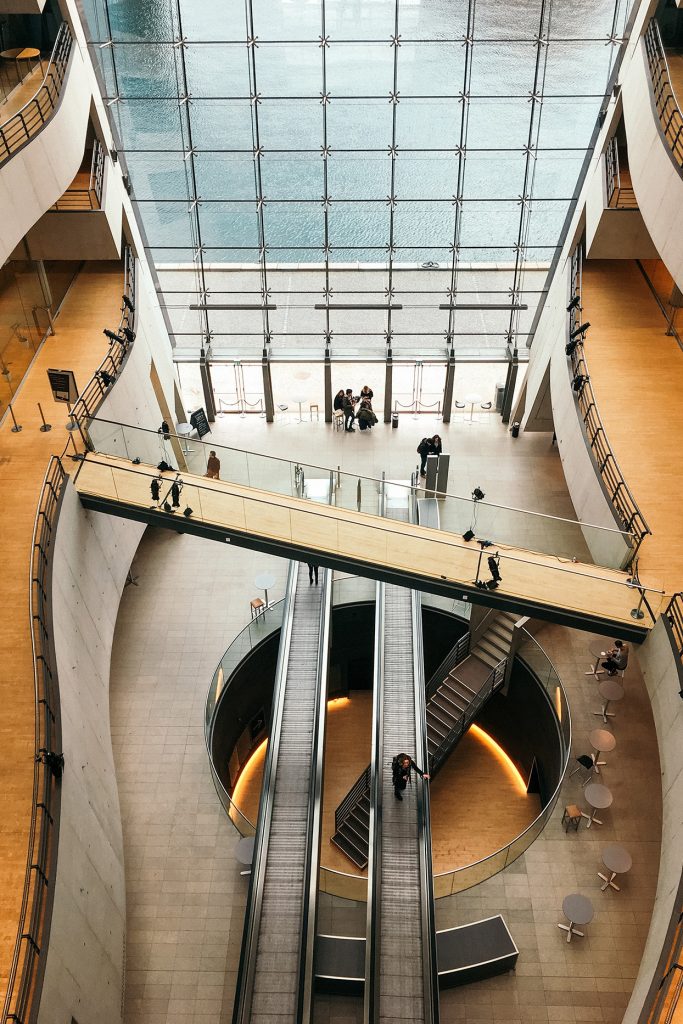Sustainable architecture aims to minimize the environmental impact caused by buildings, by moderating the use of natural resources. Do you know how to determine if architecture is truly sustainable? This article introduces some green indicators for sustainable construction. These help us determine the sustainability of an architecture.
Green indicators for sustainable construction are divided into three basic pillars. These pillars include the use of:
- green materials (sustainable construction materials)
- social responsibility (housing for all, ethical construction)
- economic efficiency (maintenance costs, affordability, circular economy).
The construction part of a building determines its sustainability. A structure’s architectural design determines its construction and maintenance costs. The construction of architecture is the biggest contributor to environmental and social harm. Buildings cause environmental harm throughout their life span. This includes the release of polluting fumes, excessive maintenance and energy requirements, etc. This environmental harm can be reduced if the architecture is sustainably constructed.
Green Materials
Green or sustainable materials are eco-friendly and obtained with a process that doesn’t harm the environment. The recycling process of green materials doesn’t cause pollution. They are completely disposable, without causing environmental harm. Therefore, it is crucial to assess the complete life cycle of material before believing that it is sustainable. A green approach to using existing materials is reclaiming, repurposing and recycling.
A sustainable way of obtaining materials is using local resources and suppliers. This approach cuts down the environmental and economic cost of transportation.

Some examples of sustainable building materials:
- Bamboo (easily grown for commercial use in only six years)
- Hemp & Hempcrete (concrete made from hemp, which is a plant that requires very little water to grow, and reduces carbon from the air)
- Natural Stone (sandstone, granite, marble, limestone etc.- these are long lasting and can be repurposed)
- Kebony or other sustainably grown wood (durable and recyclable)
- Flax fiber reinforced concrete (growing flax requires no irrigation, fertilisers or maintenance)
- Algae (used to make environmentally friendly building facades, overgrown algae can be burned to produce energy for the building at the end of its lifespan)
The use of sustainable materials reduces waste and energy consumption. It protects ecosystems and improves water and air quality. It ultimately leads to the conservation and restoration of natural resources.

Social Responsibility
A sustainable building should not use materials that were produced without social responsibility. This includes exploitation of labor and a poor work environment. Sustainable architects ensure that the materials they use are ethically produced. Locally-sourced materials generate employment for the residents. They also reduce the pollution that transportation causes. This is beneficial for the local flora and fauna.
Housing for all
The population in many countries is steadily increasing, but the planet and its resources are not. Accommodating more people in a smaller area is a goal for sustainable architects. Sustainable spaces are strategically designed to fit more in a smaller area. Good architecture and interior design can ensure that these places are comfortable, and sometimes more efficient than traditional spaces.
Improved life quality
In addition to being good for the planet, sustainable architecture is also great for its occupants. The comfort and quality of life of the occupants are considered in the construction of green buildings. The use of eco-friendly materials ensures that no harmful fumes are released, which improves the air quality. Incorporating plants and nature create a biophilic environment, which boosts brain function. Community outdoor spaces and rooftop decks can be created for people to meet and spread awareness. Green buildings use sustainable energy and have a low energy requirement. This reduces health risks caused by pollutants associated with energy use.
The social benefits of sustainable architecture are the improved living conditions, health and comfort of inhabitants. It also reduces the demand for local infrastructure and new living spaces.
Economic Efficiency
Sustainable architecture is designed to last and has low maintenance costs, hence it has higher economic efficiency. Some of the raw materials used in sustainable architecture are recycled and repurposed and may be obtained at a lower cost. The use of easy to grow, natural materials is also economical. Native plants and grass, and native materials reduce maintenance and transportation costs.

Reduced Energy Costs
Sustainable buildings cut down on a lot of energy costs. These buildings have an ample amount of natural light. Strategic placement of windows, blinds, trees and plants, reduces the amount of energy needed for lighting. Some green buildings produce their own energy by utilizing renewable resources such as sunlight, water, and wind. A building that produces more or enough energy to fulfill its own requirements achieves a net-zero effect on energy usage. In this case, the only energy cost is the setting up and maintenance of the energy-producing systems. The use of new and unconventional materials like algae and Kebony wood also reduces the energy requirement for heating and lighting. These materials are designed to help a building retain heat or cold for longer periods of time.
Circular Economy
The circular economy can be incorporated into a sustainable architecture project. It is an economic system aimed at the elimination of waste and continual use of resources. In a circular economy, the material is made, used, reused, remade and then again recycled into new material. It is based on an approach where there is no waste as an end product. This approach leads to the building of economic, natural as well as social capital.
The construction industry in India alone produces around 10-12 tonnes of waste annually. In New Delhi (India), 30% of air pollution is caused by dust from construction sites. An important aspect of sustainable architecture is repurposing materials and avoiding unnecessary construction. Architects can utilize an existing construction and renovate it instead of knocking down a building to create a new one.
A building that has all the above green indicators for sustainable construction is the best of everything. It causes the least possible harm to the environment. Its occupants have a comfortable and economically efficient living space. This architecture is good for the surrounding flora and fauna and does not deplete the earth’s natural reserves.





